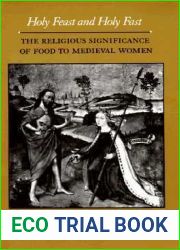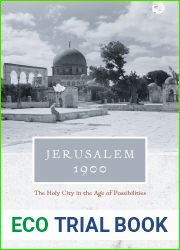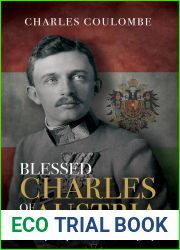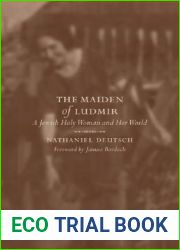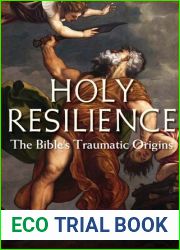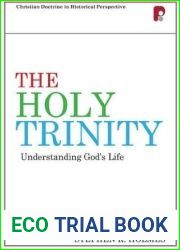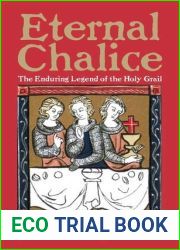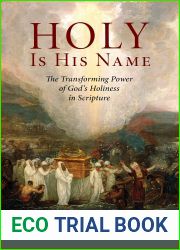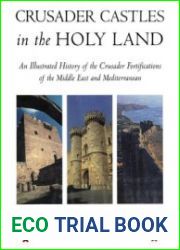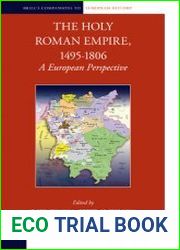
BOOKS - Holy Feast and Holy Fast: The Religious Significance of Food to Medieval Wome...

Holy Feast and Holy Fast: The Religious Significance of Food to Medieval Women
Author: Caroline Walker Bynum
Year: January 1, 1987
Format: PDF
File size: PDF 27 MB
Language: English

Year: January 1, 1987
Format: PDF
File size: PDF 27 MB
Language: English

Holy Feast and Holy Fast: The Religious Significance of Food to Medieval Women In the period between 1200 and 1500 in western Europe, a number of religious women gained widespread veneration and even canonization as saints for their extraordinary devotion to the Christian Eucharist, supernatural multiplications of food and drink, and miracles of bodily manipulation, including stigmata and inedia (living without eating). These phenomena shed much light on the nature of medieval society and medieval religion, and they form a chapter in the history of women. Previous scholars have occasionally noted these various phenomena in isolation from each other and have sometimes applied modern medical or psychological theories to them. Using materials based on saints' lives and the religious and mystical writings of medieval women and men, Caroline Walker Bynum uncovers the pattern lying behind these aspects of women's religiosity and the fascination men and women felt for such miracles and devotional practices. The author argues that food lies at the heart of much of women's piety. Women renounced ordinary food through fasting in order to prepare for receiving extraordinary food in the Eucharist. They also offered themselves as food in miracles of feeding and bodily manipulation.
Святой праздник и святой пост: Религиозное значение пищи для средневековых женщин В период между 1200 и 1500 годами в Западной Европе, ряд религиозных женщин получили широкое почитание и даже канонизацию как святые за необычайную преданность христианской евхаристии, сверхъестественные умножения еды и питья, и чудеса телесных манипуляций, включая стигматы и инедиа (жизнь без еды). Эти явления проливают много света на природу средневекового общества и средневековой религии, и они составляют главу в истории женщин. Предыдущие ученые иногда отмечали эти различные явления изолированно друг от друга и иногда применяли к ним современные медицинские или психологические теории. Используя материалы, основанные на житиях святых и религиозных и мистических писаниях средневековых женщин и мужчин, Кэролайн Уокер Байнум раскрывает закономерность, лежащую в основе этих аспектов женской религиозности и очарованности, которую мужчины и женщины испытывают к таким чудесам и преданным практикам. Автор утверждает, что еда лежит в основе большей части женского благочестия. Женщины отказывались от обычной пищи через пост, чтобы подготовиться к получению экстраординарной пищи в Евхаристии. Они также предлагали себя в качестве пищи в чудесах кормления и телесных манипуляций.
Sainte Fête et Saint Jeûne : gnification religieuse de la nourriture pour les femmes médiévales Entre 1200 et 1500 en Europe occidentale, un certain nombre de religieuses ont été largement vénérées et même canonisées en tant que saintes pour leur dévouement extraordinaire à l'Eucharistie chrétienne, les multiplications surnaturelles de la nourriture et de la boisson, et les miracles de la manipulation corporelle, y compris les stigmates et les inédias (vie sans nourriture) ). Ces phénomènes éclairent beaucoup la nature de la société médiévale et de la religion médiévale et constituent un chapitre de l'histoire des femmes. s scientifiques précédents ont parfois noté ces différents phénomènes isolément les uns des autres et ont parfois appliqué à eux des théories médicales ou psychologiques modernes. En utilisant des matériaux basés sur la vie des saints et des écritures religieuses et mystiques des femmes et des hommes médiévaux, Caroline Walker Baynum révèle le modèle qui sous-tend ces aspects de la religion féminine et le charme que les hommes et les femmes ressentent pour de telles merveilles et pratiques dévouées. L'auteur affirme que la nourriture est au cœur de la piété féminine. s femmes ont abandonné la nourriture ordinaire par le jeûne pour se préparer à recevoir une nourriture extraordinaire dans l'Eucharistie. Ils s'offraient aussi comme nourriture dans les merveilles de l'alimentation et de la manipulation corporelle.
Fiesta Santa y Ayuno Santo: significado religioso de la comida para las mujeres medievales Entre 1200 y 1500 en occidental, una serie de religiosas fueron ampliamente veneradas e incluso canonizadas como santas por su extraordinaria devoción a la eucaristía cristiana, las multiplicaciones sobrenaturales de comida y bebida, y los milagros de la manipulación corporal, incluyendo estigmas y inedia (vida sin comida). Estos fenómenos arrojan mucha luz sobre la naturaleza de la sociedad medieval y la religión medieval, y constituyen un capítulo en la historia de la mujer. Científicos anteriores a veces han notado estos diferentes fenómenos de forma aislada entre sí y a veces les han aplicado teorías médicas o psicológicas modernas. Utilizando materiales basados en las vidas de los santos y las escrituras religiosas y místicas de mujeres y hombres medievales, Caroline Walker Bynum revela el patrón detrás de estos aspectos de la religiosidad femenina y el encanto que los hombres y las mujeres experimentan por tales milagros y prácticas devocionales. La autora afirma que la comida es la base de gran parte de la piedad femenina. mujeres abandonaron la comida común a través del ayuno para prepararse para recibir comida extraordinaria en la Eucaristía. También se ofrecieron como alimento en las maravillas de la alimentación y la manipulación corporal.
Santa festa e santo digiuno: Il significato religioso del cibo per le donne medievali Tra il 1200 e il 1500 in occidentale, diverse religiose sono state ampiamente onorate e persino canonizzate come sante per la straordinaria dedizione all'eucaristia cristiana, la moltiplicazione soprannaturale del cibo e del bere, e i miracoli della manipolazione corporale, compresi stigmati e inedia (vita senza cibo). Questi fenomeni gettano molta luce sulla natura della società medievale e della religione medievale, e costituiscono un capitolo nella storia delle donne. I precedenti scienziati hanno talvolta osservato questi diversi fenomeni isolati l'uno dall'altro e talvolta applicato a loro attuali teorie mediche o psicologiche. Utilizzando materiali basati sulle abitudini dei santi e sulle scritture religiose e mistiche di donne e uomini medievali, Caroline Walker Bynum rivela lo schema alla base di questi aspetti della religiosità femminile e del fascino che uomini e donne provano per tali meraviglie e pratiche leali. L'autrice sostiene che il cibo è alla base di gran parte della devozione femminile. donne rifiutavano il cibo normale attraverso il digiuno per prepararsi ad ottenere cibo straordinario in Eucaristia. offrivano anche come cibo nelle meraviglie dell'alimentazione e della manipolazione.
Heiliger Feiertag und heiliges Fasten: Die religiöse Bedeutung der Nahrung für mittelalterliche Frauen In der Zeit zwischen 1200 und 1500 in Westeuropa erhielten eine Reihe von religiösen Frauen breite Verehrung und sogar Heiligsprechung als Heilige für ihre außerordentliche Hingabe an die christliche Eucharistie, übernatürliche Vermehrung von Essen und Trinken und Wunder der körperlichen Manipulation, einschließlich Stigmata und Inedia (ben ohne Nahrung). Diese Phänomene werfen viel Licht auf die Natur der mittelalterlichen Gesellschaft und der mittelalterlichen Religion, und sie bilden ein Kapitel in der Geschichte der Frauen. Frühere Wissenschaftler haben diese verschiedenen Phänomene manchmal isoliert voneinander festgestellt und manchmal moderne medizinische oder psychologische Theorien auf sie angewendet. Anhand von Materialien, die auf dem ben von Heiligen und den religiösen und mystischen Schriften mittelalterlicher Frauen und Männer basieren, enthüllt Caroline Walker Bynum das Muster, das diesen Aspekten der weiblichen Religiosität und der Faszination zugrunde liegt, die Männer und Frauen für solche Wunder und hingebungsvollen Praktiken empfinden. Die Autorin argumentiert, dass das Essen dem Großteil der weiblichen Frömmigkeit zugrunde liegt. Die Frauen verzichteten durch das Fasten auf das übliche Essen, um sich auf die Aufnahme außergewöhnlicher Speisen in der Eucharistie vorzubereiten. e boten sich auch als Nahrung in den Wundern der Fütterung und der körperlichen Manipulation an.
''
Kutsal Bayram ve Kutsal Oruç: Batı Avrupa'da 1200 ve 1500 Yılları Arasında Ortaçağ Kadınları İçin Yemeğin Dini Önemi, Bir dizi dindar kadın, Hıristiyan Efkaristiya'ya olağanüstü bağlılıkları nedeniyle yaygın bir şekilde hürmet gördü ve hatta aziz olarak azizleştirildi. Yiyecek ve içeceklerin doğaüstü çarpımları ve stigmata ve inedia (yiyeceksiz yaşam) dahil olmak üzere bedensel manipülasyon mucizeleri. Bu olgular ortaçağ toplumunun ve ortaçağ dininin doğasına çok fazla ışık tutmakta ve kadın tarihinde bir bölüm oluşturmaktadır. Önceki bilim adamları bazen bu çeşitli fenomenleri birbirinden ayrı olarak not ettiler ve bazen modern tıbbi veya psikolojik teorileri onlara uyguladılar. Azizlerin yaşamlarına ve ortaçağ kadın ve erkeklerinin dini ve mistik yazılarına dayanan materyalleri kullanan Caroline Walker Bynum, kadın dindarlığının bu yönlerinin altında yatan modeli ve erkeklerin ve kadınların bu tür mucizeler ve özverili uygulamalar için hissettikleri hayranlığı ortaya koyuyor. Yazar, yemeğin kadın dindarlığının merkezinde olduğunu savunuyor. Kadınlar, Eucharist'te olağanüstü yiyecekler almaya hazırlanmak için oruç tutarak sıradan yiyecekleri reddetti. Ayrıca beslenme ve bedensel manipülasyon harikalarında kendilerini yiyecek olarak sundular.
العيد المقدس والصيام المقدس: الأهمية الدينية للغذاء لنساء العصور الوسطى بين 1200 و 1500 في أوروبا الغربية، تلقى عدد من النساء المتدينات تبجيلًا واسع النطاق وحتى تقديسًا كقديسات لتفانيهن غير العادي في القربان المقدس المسيحي، التكاثر الخارق للطبيعة للطعام والشراب، ومعجزات التلاعب الجسدي، بما في ذلك وصمة العار والإنيديا (الحياة بدون طعام). تلقي هذه الظواهر الكثير من الضوء على طبيعة مجتمع العصور الوسطى وديانة العصور الوسطى، وتشكل فصلاً من تاريخ المرأة. لاحظ علماء سابقون في بعض الأحيان هذه الظواهر المختلفة بمعزل عن بعضها البعض وقاموا أحيانًا بتطبيق النظريات الطبية أو النفسية الحديثة عليها. باستخدام مواد تستند إلى حياة القديسين والكتابات الدينية والصوفية للنساء والرجال في العصور الوسطى، تكشف كارولين ووكر بينوم عن النمط الكامن وراء هذه الجوانب من التدين الأنثوي والانبهار الذي يشعر به الرجال والنساء لمثل هذه المعجزات والممارسات المخلصة. يجادل المؤلف بأن الطعام هو جوهر الكثير من التقوى الأنثوية. رفضت النساء الطعام العادي من خلال الصيام للاستعداد لتلقي طعام غير عادي في القربان المقدس. كما قدموا أنفسهم كطعام في عجائب التغذية والتلاعب الجسدي.







